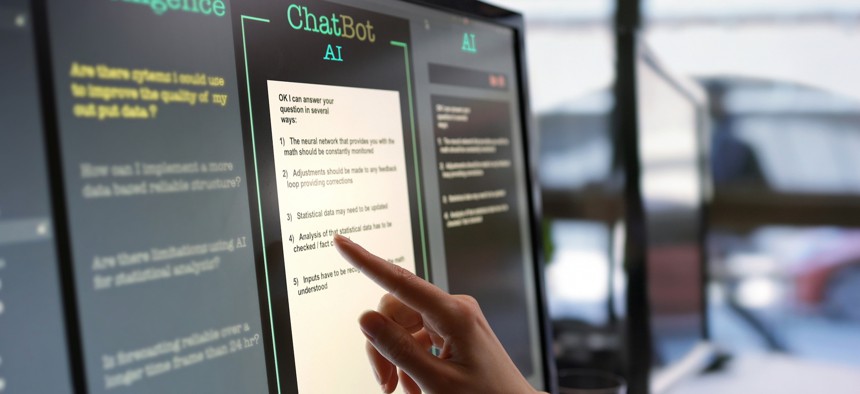Priming the workforce is key to future AI efforts, federal IT leaders say

Laurence Dutton/Getty Images
One agency tech leader is urging IT workers inside government and out to "get into the shallow end of the AI swimming pool" and experiment with the new tools.
As federal agencies increasingly adopt data analytics and artificial intelligence tools to support their missions, officials are taking deliberate and cautious steps to ensure that their workforces are comfortable with using and leveraging these types of new technologies.
During a panel discussion at ATARC’s CIO summit on Wednesday, seven officials who oversee their agencies’ IT operations and are working to modernize legacy systems said efforts to embrace emerging tools like AI are largely focused — at least for now — on educating employees about the benefits and possibilities of emerging technologies and automating rote tasks.
With advanced technologies becoming more prevalent across the public and private sectors, government leaders are taking early steps to chart out the safe adoption of these tools. As part of this goal, President Joe Biden issued an executive order on responsible uses of AI in October that said the federal government “will work to ensure that all members of its workforce receive adequate training to understand the benefits, risks and limitations of AI for their job functions.”
Trang Tran, deputy chief data officer at U.S. Customs and Border Protection, said Biden’s order pushes agencies “to understand how we can better leverage this new technology” — including when it comes to good governance practices.
Tran said part of agencies’ adoption of this goal must include stressing to employees that AI is “not something that will replace them,” but added that the early concerns she’s heard have largely been about how the new tools will impact day-to-day operations.
“I think lots of times when people actually come up to me, and they're scared about the changes that we are implementing in the agency, it’s the fact that they don't understand how it's going to help them versus they're scared that their jobs may be impacted,” Tran said.
Officials said this type of hesitation on the part of the federal workforce needs to be adequately addressed to ensure a more seamless shift toward using AI technologies.
Audrey Story — a deputy chief information officer with the Department of Health and Human Services — said that working to secure and protect the data used in these tools is a priority, but that agency leaders also need to be focused on asking themselves “how do you get employees to leverage this new technology.”
She said one way her agency has gone about focusing on this task is working to bring employees into the discussions and to “tap into that human potential.”
“We're allowing them to do the thinking of this effort and to bring the leadership and the ideas,” Story said, adding that “it seems to work better in our organization where the ideas are coming from the employees.”
Dr. Paul Tibbits, the executive director of the Department of Veterans Affairs’ Office of Technical Integration, also said that VA is “very much in a learning mode” when it comes to using AI. But he added that the department’s focus on training, education and some early uses of the technology don’t necessarily correlate with broad adoption of the tools anytime soon, and that familiarizing employees with AI is more of an immediate priority.
“We’re encouraging everyone at the VA — and outside, by the way — to get into the shallow end of the AI swimming pool,” Tibbits said. “But then we have this flotation line where if you get into the shallow end, don’t get into the deep end.”
VA has already taken some early steps to deploy emerging technologies across the massive department, including setting up a National Artificial Intelligence Institute to conduct AI-related research. Tibbits said VA is “exploring the value of artificial intelligence,” including when it comes to processing veterans’ claims and ongoing suicide prevention efforts, but added that the main focus is “be careful, study and assess and learn.”
“I call it pilot work to understand the good, the bad and the ugly,” he added.
Many federal agencies are already experimenting with AI technologies or are planning to use the tools to enhance their capabilities moving forward. A report released by the Government Accountability Office on Tuesday found that 20 agencies reported more than 1,200 current or planned uses of AI, including roughly 200 instances where the tools had already been deployed.






